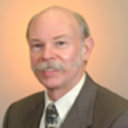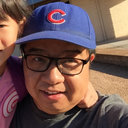Predicting multipulse laser-induced failure for molybdenum metal mirrors.
Palavras-chave
Resumo
In combination with known thermomechanical-fatigue data for Mo, we have conducted transient photothermal deflection (TPD) measurements to develop a model for the multipulse laser damage of Mo mirrors to predict their lifetimes. In laser-damage experiments to verify the model, Mo mirrors were irradiated with 10-ns Nd:YAG laser pulses at 1064 nm at a 10-Hz repetition rate. Digitized TPD waveforms indicated peak surface angular deflection that could then be converted into surface displacement. Numerical modeling of the vertical heat distribution enabled the peak surface-deflection signal to be converted into peak surface temperature. The thermomechanical model was verified by both the experimental and the numerical results. Conventional mechanical-fatigue data for Mo were used to derive a predictive equation for the laser-accumulation lifetime of Mo mirrors. Experiments were performed with 1-10(4) pulses per site, yielding laser-damage thresholds and accumulation curves. The accumulation behavior predicted from measurements of mechanical fatigue was in excellent agreement with the measured behavior. Thus a single-pulse TPD measurement of peak deformation at a subthreshold laser fluence, in conjunction with mechanical-fatigue data, may be used to estimate the safe operating fluence for a component in a multipulse laser environment.



